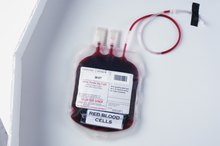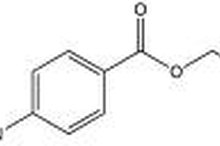What Is the Importance of Buffers in Pharmacy?
Buffers are prepared in pharmacies or by drug manufacturers. They adjust the pH of aqueous solutions for applications that require predictable stability and best clinical outcomes. From a pharmacological perspective, it is important to control the pH of a solution to minimize drug degradation, to improve patient comfort and compliance, and to improve the efficacy of delivery.
Identification
Buffer solutions are able to resist a significant change in pH when a limited concentration of acid or base is added to them. The pH of a solution is defined as the negative logarithm of the molar hydrogen ion concentration. The most important characteristic of a buffer solution is its pH. These solutions are generally clear liquids prescribed by physicians and administered topically or intravenously by trained hospital personnel.
- Buffer solutions are able to resist a significant change in pH when a limited concentration of acid or base is added to them.
- The most important characteristic of a buffer solution is its pH.
- These solutions are generally clear liquids prescribed by physicians and administered topically or intravenously by trained hospital personnel.
Mechanisms of Action
What is Sodium Phosphate Monobasic?
Learn More
A buffer solution contains an acid and its conjugate base, or a base and its conjugate acid. A strong acid loses a proton easily, and hence the conjugate base of a strong acid is a weak base. The most important characteristic of a buffer solution is the pH, which can be calculated using the Henderson-Hasselbalch equation, and its buffer capacity--the amount of acid or base that can be added without significant pH changes--which can be calculated from the van Slyke equation.
- A buffer solution contains an acid and its conjugate base, or a base and its conjugate acid.
- A strong acid loses a proton easily, and hence the conjugate base of a strong acid is a weak base.
Significance
The primary purpose and importance of buffers in pharmacy is to protect pharmaceutical preparations from any sudden change in pH even when limited concentrations of acid or base are added.
The addition of any compound to a solution will also affect the isotonicity, since isotonicity is a property of the number of particles in solution. So, the osmotic pressure of a solution will be affected not only by the drug but also by any buffer compounds that are included in the formulation.
After these compounds have been added, it is still possible that the solution will not be isotonic. The pharmacist calculates and adds compounds--typically sodium chloride or potassium phosphate--or sterile water to the solution. This is commonly called a buffered isotonic solution. Both buffered solutions and isotonic solutions are also referred to as adjusted solutions.
- The primary purpose and importance of buffers in pharmacy is to protect pharmaceutical preparations from any sudden change in pH even when limited concentrations of acid or base are added.
- So, the osmotic pressure of a solution will be affected not only by the drug but also by any buffer compounds that are included in the formulation.
Applications
What Is the pH of D.I. water?
Learn More
Buffered solutions given intravenously have very few adverse effects, as the body adjusts naturally to slight changes in the normal blood pH of 7.4. In pharmaceutical formulation for other applications, it is important to avoid large changes in the osmotic pressure across a cellular membrane. Thus, when buffered isotonic solutions are made for eyes, soft tissues, nasal cavities, and anal or vaginal cavity applications, special considerations of isotonicity arise to avoid complications. A buffered isotonic solution is prepared and administered that will have the same solute concentration as that in the biological fluid it contacts.
- Buffered solutions given intravenously have very few adverse effects, as the body adjusts naturally to slight changes in the normal blood pH of 7.4.
Considerations
Most buffers in pharmacy are manufactured by companies such as Baxter and Abbott Laboratories. However, many occasions still arise in the pharmacy to calculate and prepare isotonic buffer solutions 2. Pharmacists must draw on their knowledge of anatomy, physiology, mathematics, chemistry and other sciences to prepare the appropriate admixture for beneficial patient outcomes.
Related Articles
References
- "Applied Physical Pharmacy"; Mansoor M. Amiji, Beverly J. Sandmann; 2002
- "Physicochemical Principles of Pharmacy"; Alexander Taylor Florence, D. Attwood; 2006
Writer Bio
Ken Appelt is a senior sales and marketing executive with experience that includes product design, research, production, quality assurance, distribution and education. He has been writing and publishing articles in since 1982, mainly in healthcare, medical device and scientific periodicals. He holds a Bachelor of Science in chemistry from the University of Wisconsin and a Master of Business Administration from Lake Forest.









